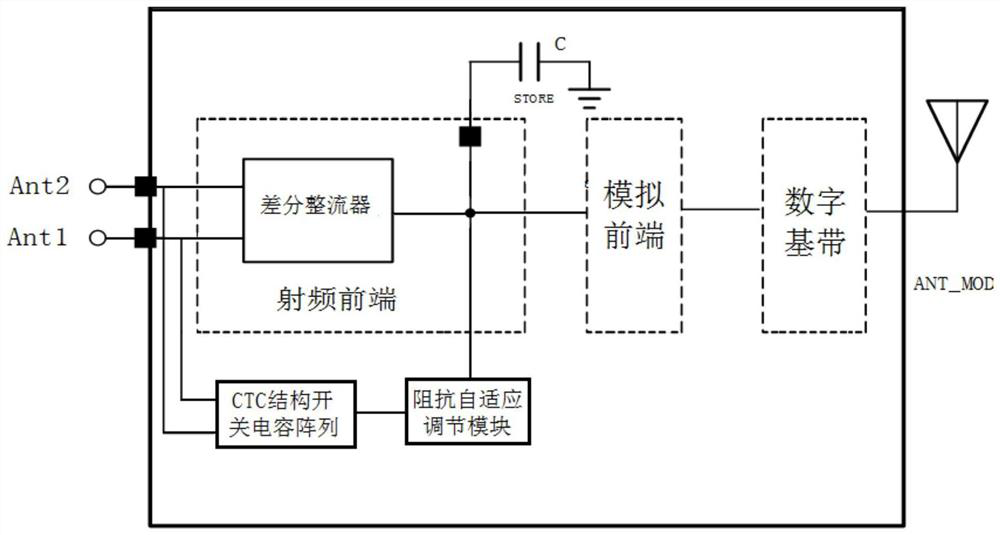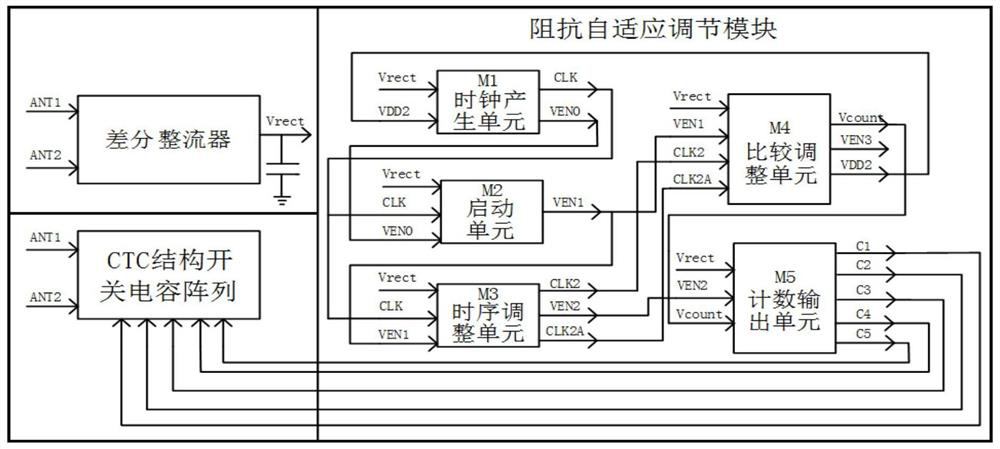Collaborative matching and self-tuning system of radio frequency energy collection front end
A radio frequency energy, self-tuning technology, applied in the direction of impedance matching network, resonant circuit adjustment, multi-terminal pair network, etc., can solve the problems of time-consuming and labor-intensive impedance matching, difficult integration, and the need for a central processing unit, etc.
- Summary
- Abstract
- Description
- Claims
- Application Information
AI Technical Summary
Problems solved by technology
Method used
Image
Examples
Embodiment Construction
[0058]The principles and features of the present invention are described below in conjunction with the accompanying drawings, and the examples given are only used to explain the present invention, and are not intended to limit the scope of the present invention.
[0059] Such as figure 1 As shown, a cooperative matching and self-tuning system of a radio frequency energy collection front end includes an antenna and a tag chip, the antenna is specifically a differential antenna with a non-50 ohm impedance, the radio frequency front end of the tag chip includes a differential rectifier, and the cooperative The matching and self-tuning system also includes a CTC structure switched capacitor array and an impedance adaptive adjustment module; the two output ports of the differential antenna are connected to the input terminals of the differential rectifier (the input terminals ANT1 and ANT2 of the differential rectifier are respectively connected to the differential rectifier) The t...
PUM
 Login to View More
Login to View More Abstract
Description
Claims
Application Information
 Login to View More
Login to View More - R&D
- Intellectual Property
- Life Sciences
- Materials
- Tech Scout
- Unparalleled Data Quality
- Higher Quality Content
- 60% Fewer Hallucinations
Browse by: Latest US Patents, China's latest patents, Technical Efficacy Thesaurus, Application Domain, Technology Topic, Popular Technical Reports.
© 2025 PatSnap. All rights reserved.Legal|Privacy policy|Modern Slavery Act Transparency Statement|Sitemap|About US| Contact US: help@patsnap.com



